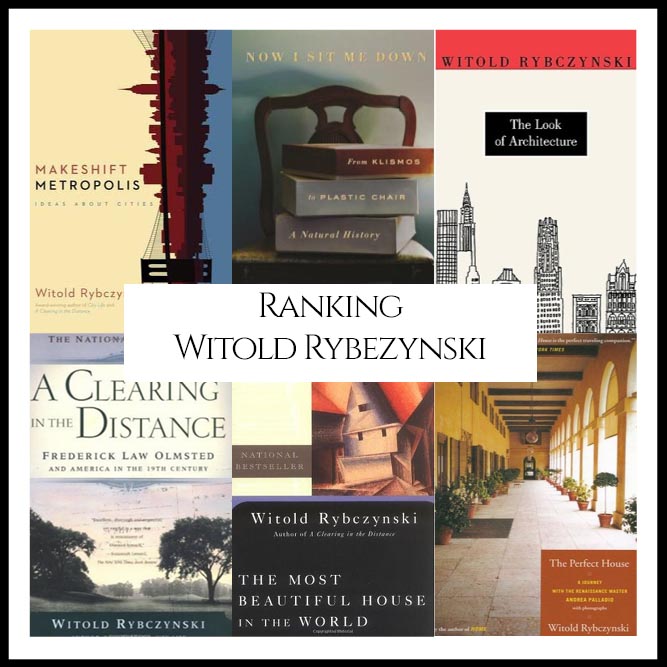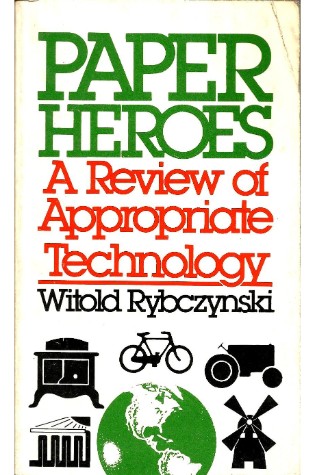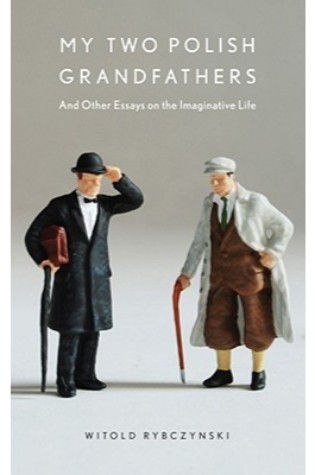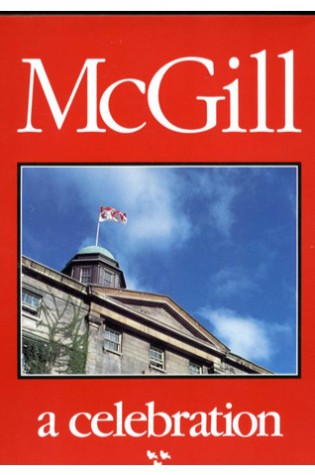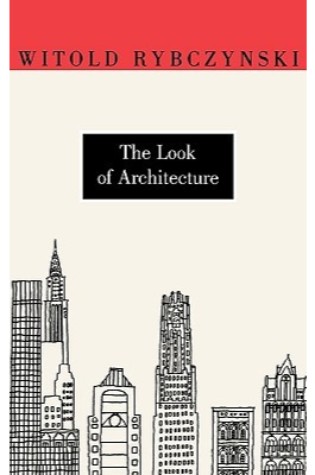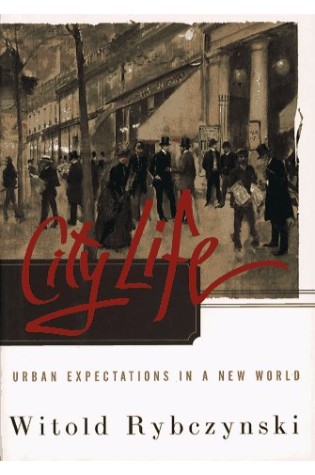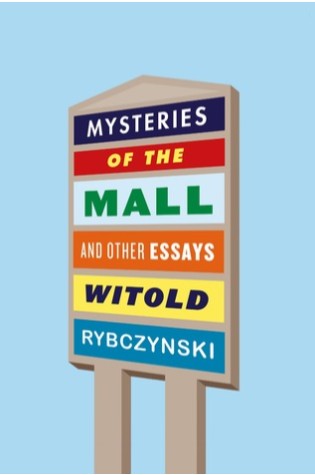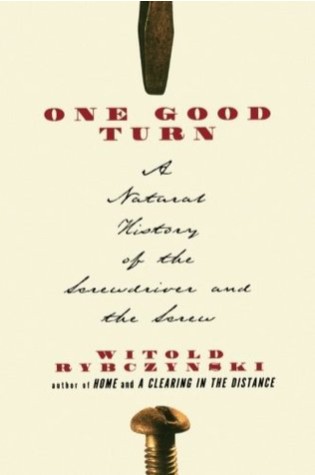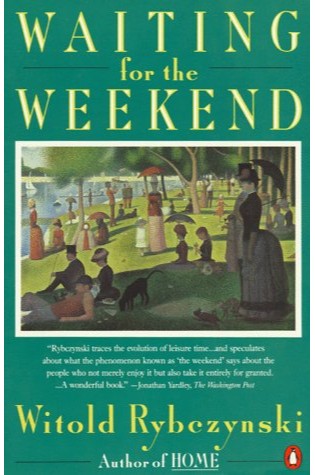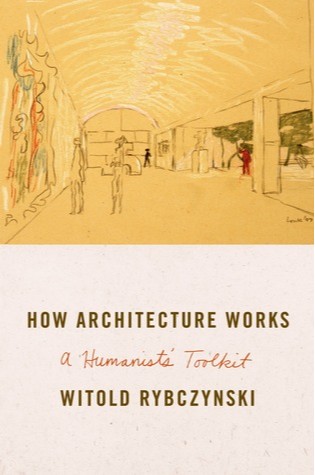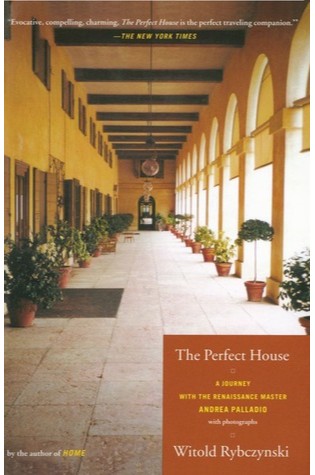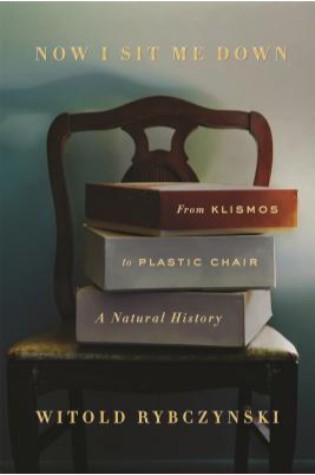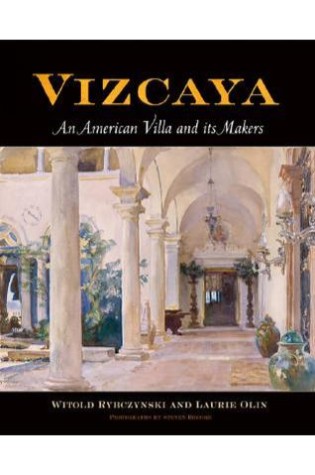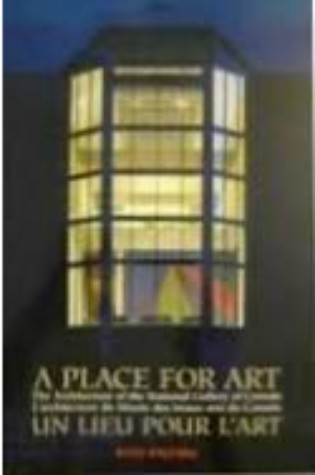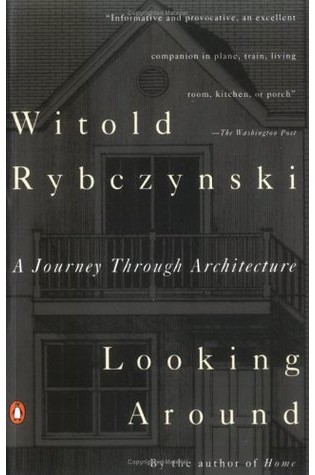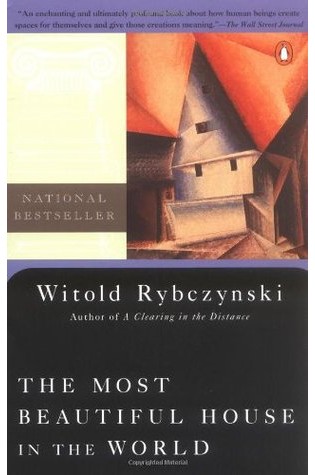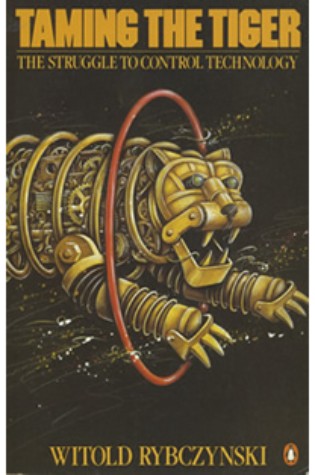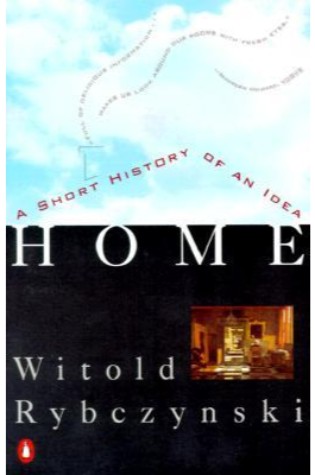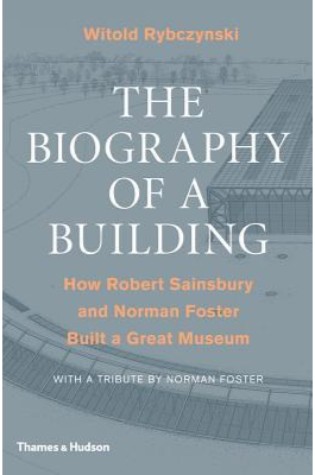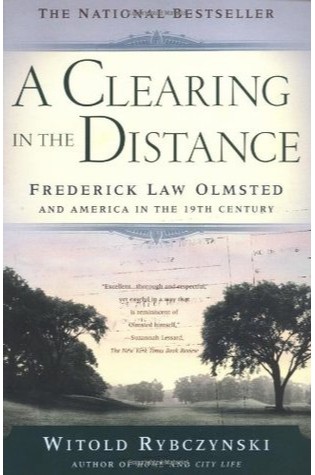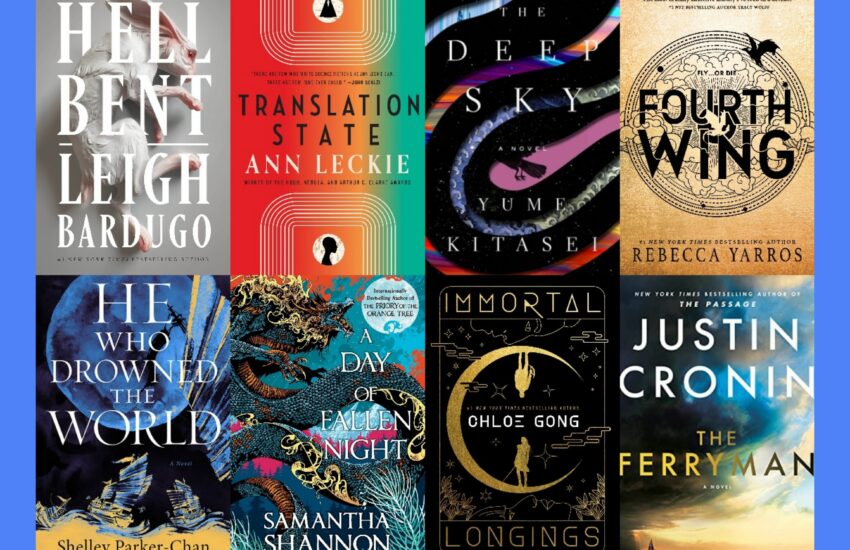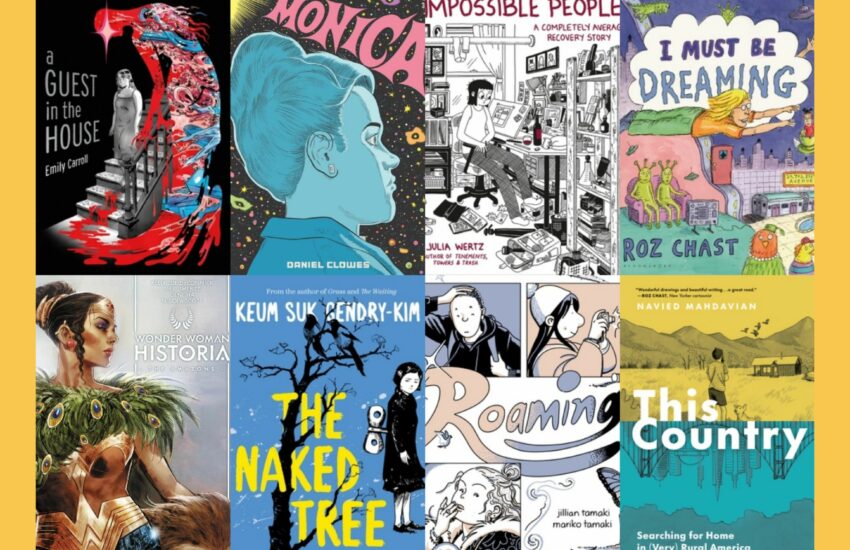Ranking Author Witold Rybczynski’s Best Books (A Bibliography Countdown)
“What are Witold Rybczynski’s Best Books?” We looked at all of Rybczynski’s authored bibliography and ranked them against one another to answer that very question!
We took all of the books written by Witold Rybczynski and looked at his Goodreads, Amazon, and LibraryThing scores, ranking them against one another to see which books came out on top. The books are ranked in our list below based on which titles have the highest overall score between all 3 review sites in comparison with all of the other books by the same author. The process isn’t super scientific and in reality, most books aren’t “better” than other books as much as they are just different. That being said, we do enjoy seeing where our favorites landed, and if you aren’t familiar with the author at all, the rankings can help you see what books might be best to start with.
The full ranking chart is also included below the countdown on the bottom of the page.
Happy Scrolling!
The Top Book’s Of Witold Rybczynski
21 ) Paper Heroes: Appropriate Technology: Panacea or Pipe Dream?
- Goodreads: 19
- Amazon: 20
- LibraryThing: 19
Purchase / Learn More
19 ) My Two Polish Grandfathers: And Other Essays on the Imaginative Life
- Goodreads: 20
- Amazon: 18
- LibraryThing: 17
The story of how the author’s forebears left Poland because of World War II and ended up in Canada
Purchase / Learn More
19 ) McGill: A Celebration
- Goodreads: 21
- Amazon: 15
- LibraryThing: 19
Told in ten parts by prominent Montreal writers and distinguished graduates, the story of McGill unfolds with anecdotal charm and insightful overview. The lively text recaptures the spirit of campus life from the time of the university’s beginnings and recounts the exploits and accomplishments of its grand personages and colourful figures.
Purchase / Learn More
18 ) The Look of Architecture
- Goodreads: 6
- Amazon: 19
- LibraryThing: 17
What is style in architecture? “Style is like a feather in a woman’s hat, nothing more,” said Le Corbusier, expressing most modern architects’ low regard for the subject. But Witold Rybczynski disagrees, and in The Look of Architecture, he makes a compelling case for the importance of style to the mother of the arts.”.”This is a book brimming with sharp observations – that form does not follow function; that the best architecture is not timeless but precisely of its time; that details do not merely complement the architecture – details are the architecture. But the heart of the book illuminates the connection between architecture, interior decoration, and fashion. Style is the language of architecture, Rybczynski writes, and fashion represents the wide – and swirling – cultural currents that shape and direct that language. The two, style and fashion, are intimately linked – indeed, architecture cannot escape fashion. To set these ideas in sharp relief, he shows us how style and fashion have been expressed in the work of major architects – including Frank Gehry, Mies van der Rohe, Charles McKim, Allan Greenberg, Robert Venturi, Enrique Norten, and many others. He helps us see their works anew, and ultimately, to look afresh at our surroundings.
Purchase / Learn More
17 ) City Life: Urban expectations in a new world
- Goodreads: 10
- Amazon: 17
- LibraryThing: 14
Purchase / Learn More
15 ) Last Harvest: How A Cornfield Became New Daleville: Real Estate Development in America
Review Website Ranks:
- Goodreads: 16
- Amazon: 12
- LibraryThing: 9
Traces the creation of a Pennsylvania residential subdivision from its planning stage to the residence of its first owners, in an account that offers insight into the long process of development and how it is related to sprawl and ex-urban growth.(summary from ISBN 0743235967)
Purchase / Learn More
15 ) Mysteries of the Mall: And Other Essays
- Goodreads: 18
- Amazon: 4
- LibraryThing: 15
A deep exploration of modern life that examines our cities, public places, and homes.
Purchase / Learn More
14 ) One Good Turn: A Natural History of the Screwdriver and the Screw
- Goodreads: 13
- Amazon: 12
- LibraryThing: 11
A story of mechanical discovery and genius ..
Purchase / Learn More
13 ) Waiting for the Weekend
- Goodreads: 15
- Amazon: 6
- LibraryThing: 13
Purchase / Learn More
12 ) How Architecture Works: A Humanist’s Toolkit
- Goodreads: 12
- Amazon: 12
- LibraryThing: 8
An essential toolkit for understanding architecture as both art form and the setting for our everyday lives We spend most of our days and nights in buildings, living and working and sometimes playing. Buildings often overawe us with their beauty. Architecture is both setting for our everyday lives and public art form—but it remains mysterious to most of us. In How Architecture Works, Witold Rybczynski, one of our best, most stylish critics and winner of the Vincent Scully Prize for his architectural writing, answers our most fundamental questions about how good—and not-so-good—buildings are designed and constructed. Introducing the reader to the rich and varied world of modern architecture, he takes us behind the scenes, revealing how architects as different as Frank Gehry, Renzo Piano, and Robert A. M. Stern envision and create their designs. He teaches us how to “read” plans, how buildings respond to their settings, and how the smallest detail—of a stair balustrade, for instance—can convey an architect’s vision. Ranging widely from a war memorial in London to an opera house in St. Petersburg, from the National Museum of African American History and Culture in Washington, D.C., to a famous architect’s private retreat in downtown Princeton, How Architecture Works, explains the central elements that make up good building design. It is an enlightening humanist’s toolkit for thinking about the built environment and seeing it afresh. “Architecture, if it is any good, speaks to all of us,” Rybczynski writes. This revelatory book is his grand tour of architecture today.
Purchase / Learn More
11 ) The Perfect House: A Journey with Renaissance Master Andrea Palladio
- Goodreads: 4
- Amazon: 11
- LibraryThing: 16
Before Andrea Palladio began designing his simple, gracious, perfectly proportioned villas, architectural genius was reserved for temples and palaces. Palladio elevated the architecture of the private house into an art form, and he not only designed and built, he wrote. His late-sixteenth-century architectural treatises were read and studied by great thinkers as diverse as Thomas Jefferson and Inigo Jones, profoundly influencing the design of Monticello, the tidewater plantation houses of Virginia, and the White House. All across America today, Palladio’s influence is evident in ample porches and columned porticoes, in grand ceiling heights and front-door pediments.”.”In The Perfect House, Witold Rybczynski, whose books on domestic and landscape architecture have transformed our understanding of parks and buildings, looks at Palladio’s famous villas, not with the eye of an art historian but with the eye of an architect. He wanted to know why a handful of houses in an obscure corner of the Venetian Republic should have made their presence felt hundreds of years later and halfway across the globe.
Purchase / Learn More
10 ) Now I Sit Me Down: From Klismos to Plastic Chair: A Natural History
- Goodreads: 13
- Amazon: 15
- LibraryThing: 2
In Now I Sit Me Down, the distinguished architect and writer Witold Rybczynski chronicles the history of the chair from the folding stools of pharaonic Egypt to the ubiquitous stackable monobloc chairs of today. He tells the stories of the inventor of the bentwood chair, Michael Thonet, and of the creators of the first molded-plywood chair, Charles and Ray Eames. He reveals the history of chairs to be a social history–of different ways of sitting, of changing manners and attitudes, and of varying tastes. The history of chairs is the history of who we are. We learn how the ancient Chinese switched from sitting on the floor to sitting in a chair, and how the iconic chair of Middle America–the Barcalounger–traces its roots back to the Bauhaus. Rybczynski weaves a rich tapestry that draws on art and design history, personal experience, and historical accounts. And he pairs these stories with his own delightful hand-drawn illustrations: colonial rockers and English cabrioles, languorous chaise longues, and no-nonsense ergonomic task chairs–they’re all here.
Purchase / Learn More
9 ) Vizcaya: An American Villa and Its Makers
- Goodreads: 2
- Amazon: 4
- LibraryThing: 19
In Vizcaya: An American Villa and Its Makers, a celebrated architecture critic and writer and an award-winning landscape architect explore the little-known story of Vizcaya, an extraordinary national treasure. Witold Rybczynski and Laurie Olin use a rich collection of illustrations, historic photographs, and narrative to document the creation of this stunning house and landscape. Vizcaya was completed in 1916 as the winter retreat of Chicago industrialist James Deering. The cosmopolitan bachelor, who chose Miami for its warm climate, enlisted the guidance of artist Paul Chalfin, with whom he traveled throughout Italy to survey houses and gardens. With the assistance of architect F. Burrall Hoffman, Jr., and garden designer Diego Suarez, the 180-acre site on Biscayne Bay was transformed into a grand estate, complete with lagoons, canals, citrus groves, a farm village, a yacht harbor, and a 40-room Baroque mansion.
Purchase / Learn More
8 ) A Place for Art/Un lieu pour l’art: The Architecture of the National Gallery of Canada
- Goodreads: 1
- Amazon: 20
- LibraryThing: 2
Purchase / Learn More
6 ) Looking Around: A Journey Through Architecture
- Goodreads: 6
- Amazon: 6
- LibraryThing: 10
Looking Around is about architecture as an art of compromise – between beauty and function, aspiration and engineering, builders and clients. It is the story of the Seagram Building in New York and the Wexner Center for the Visual Arts in Columbus, Ohio – a museum that opened without a single painting on view, so that critics could better appreciate its design. But what of the visitors who want a building that displays art well? What of those who work in the building?… (more)(summary from ISBN 0670844217)
Purchase / Learn More
6 ) The Most Beautiful House in the World
- Goodreads: 8
- Amazon: 2
- LibraryThing: 12
Witold Rybezynski takes us on an extraordinary odyssey as he tells the story of designing and building of his own house. Rybezynski’s project began as a workshed; through a series of “happy accidents,” however, the structure gradually evolved into a full-fledge house.
Purchase / Learn More
4 ) Taming the Tiger: The Struggle to Control Technology
- Goodreads: 17
- Amazon: 1
- LibraryThing: 2
Purchase / Learn More
4 ) Makeshift Metropolis: Ideas About Cities
Review Website Ranks:
- Goodreads: 11
- Amazon: 2
- LibraryThing: 7
In this new work, prizewinning author, professor, and Slate architecture critic Witold Rybczynski returns to the territory he knows best: writing about the way people live, just as he did in the acclaimed bestsellers Home and A Clearing in the Distance. In Makeshift Metropolis, Rybczynski has drawn upon a lifetime of observing cities to craft a concise and insightful book that is at once an intellectual history and a masterful critique. Makeshift Metropolis describes how current ideas about urban planning evolved from the movements that defined the twentieth century, such as City Beautiful, the Garden City, and the seminal ideas of Frank Lloyd Wright and Jane Jacobs. If the twentieth century was the age of planning, we now find ourselves in the age of the market, Rybczynski argues, where entrepreneurial developers are shaping the twenty-first-century city with mixed-use developments, downtown living, heterogeneity, density, and liveliness. He introduces readers to projects like Brooklyn Bridge Park, the Yards in Washington, D.C., and, further afield, to the new city of Modi’in, Israel—sites that, in this age of resource scarcity, economic turmoil, and changing human demands, challenge our notion of the city. Erudite and immensely engaging, Makeshift Metropolis is an affirmation of Rybczynski’s role as one of our most original thinkers on the way we live today.
Purchase / Learn More
3 ) Home: A Short History of an Idea
- Goodreads: 5
- Amazon: 6
- LibraryThing: 6
Purchase / Learn More
2 ) The Biography of a Building: How Robert Sainsbury and Norman Foster Built a Great Museum
- Goodreads: 9
- Amazon: 6
- LibraryThing: 1
Witold Rybczynski is an architectural writer with a superlative style, a uniquely humanistic approach to his subject, and an enormous reputation. The Sainsbury Centre for Visual Arts at the University of East Anglia was Norman Foster’s first major commission and the project that set him on the road to fame and fortune. It remains highly regarded in the architectural world.
Purchase / Learn More
1 ) A Clearing in the Distance: Frederick Law Olmsted and North America in the Nineteenth Century
- Goodreads: 3
- Amazon: 6
- LibraryThing: 5
In a brilliant collaboration between writer and subject, Witold Rybczynski, the bestselling author of Home and City Life, illuminates Frederick Law Olmsted’s role as a major cultural figure at the epicenter of nineteenth-century American history. We know Olmsted through the physical legacy of his stunning landscapes — among them, New York’s Central Park, California’s Stanford University campus, and Boston’s Back Bay Fens. But Olmsted’s contemporaries knew a man of even more extraordinarily diverse talents. Born in 1822, he traveled to China on a merchant ship at the age of twenty-one. He cofounded The Nation magazine and was an early voice against slavery. He managed California’s largest gold mine and, during the Civil War, served as the executive secretary to the United States Sanitary Commission, the precursor of the Red Cross. Rybczynski’s passion for his subject and his understanding of Olmsted’s immense complexity and accomplishments make his book a triumphant work. In A Clearing in the Distance, the story of a great nineteenth-century American becomes an intellectual adventure.
Purchase / Learn More
